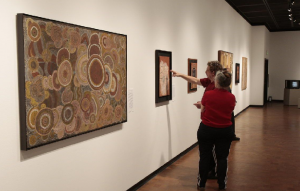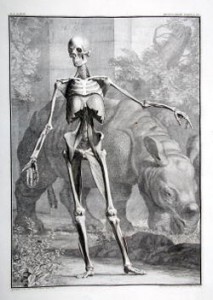The lecture given by Rita and Gao this morning was centered around shape, in nature, in engineering, and in art. One random thing that I thought was cool during the lecture was learning that opals are clusters of nanospheres that reflect light and that their colors are resultant from shape differences, because I was always fascinated by opals when I was younger. I also thought that the video on the fabric of space-time was interesting, but a hard concept to truly grasp. Einstein said that space-time does have a shape, which curves and warps, and this curvature causes gravity. I looked it up to try to understand it and gravity better, and this article is easy to comprehend but I still have questions about how black holes fit into this model and about what it is composed of-although, so do scientists much more brilliant than me. The relation of structure to function, as it relates to living things from cells to entire organisms, was a theme I had been made very aware of last year in AP biology, but it can also be applied to manmade structures, and we can get inspiration from nature.
The Aboriginal art in the “Icons of the Desert” exhibit at the Fowler Museum was really beautiful; I especially liked the more abstract pieces. I thought it was interesting how the elders, upon realizing that their sacred works revealed too much, changed their style to be more abstract.
It was sad to hear that the indigenous peoples of Australia were treated in much the same, terrible way that the indigenous peoples of the Americas were treated. I wonder why almost all the paintings are composed of a great number of dots; I wonder what the significance of that is and what tool was used to paint. It made me think of when pointilism (images composed of dots) was part of a lecture. Dots are used in print and screen, and it different art movements from different cultures, such as neo-impressionism, and that artist Yayoi Kusamo who is obsessed with dots.
Visiting the UCLA Plasma Research Center was a really cool opportunity; the machines were huge!  I was amazed at how people could hand construct all that; it seems so complicated. I was glad to clear up what exactly plasma, the fourth state of matter, is (how it becomes plasma when the electrons separate and atoms can no longer form at such intense heat), and what is is used for (which is a lot of things: electronics, as a semiconductor, possibly for energy through fusion in the future). I was kind of surprised to hear that our sun has a very cool temperature for plasma, and that it’s massive energy is only resultant from it’s size-a small amount couldn’t power anything.
I was amazed at how people could hand construct all that; it seems so complicated. I was glad to clear up what exactly plasma, the fourth state of matter, is (how it becomes plasma when the electrons separate and atoms can no longer form at such intense heat), and what is is used for (which is a lot of things: electronics, as a semiconductor, possibly for energy through fusion in the future). I was kind of surprised to hear that our sun has a very cool temperature for plasma, and that it’s massive energy is only resultant from it’s size-a small amount couldn’t power anything.
The special collections was neat too; I thought it was really cool to see all the old books and other publications that we’ve learned about the impact of and read excerpts from in school, such as Copernicus’s De revolutionibus orbium coelestium from 1543, a first edition of Darwin’s On the Origin of Species, the letter from Florence Nightingale, and to see how old medical journals and ways of drawing anatomy-it’s funny how in medical drawings the body was depicted in classical poses with a background. Obviously things have changed but I think it’s cool that doctors and scientists still today can research from the rich collection and vast sources of knowledge spanning hundreds of years to support scientist progress today through rediscovery.

